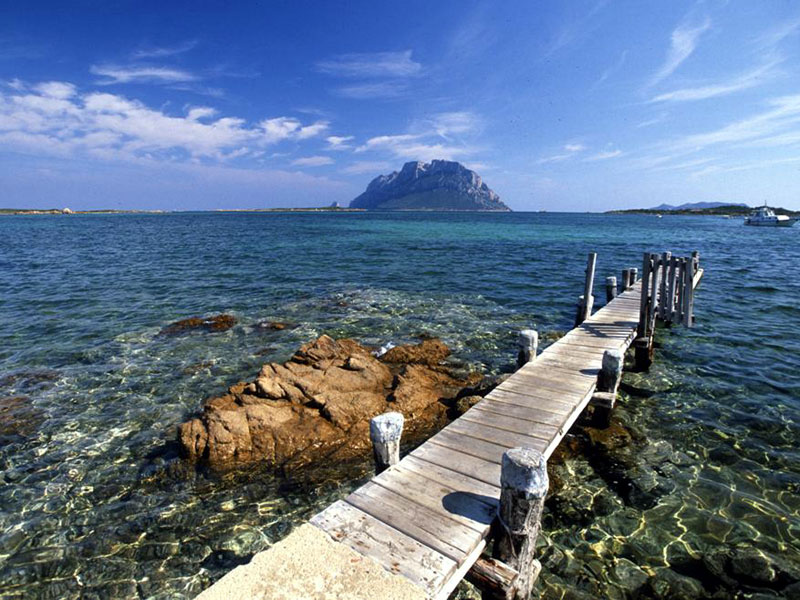Area Marina Protetta Tavolara
Punta Coda Cavallo
www.amptavolara.itPoints of Interest
Tavolara
Unique and original, Tavolara is the largest and most charming island
in the territory of the marine protected area. In the Paleolithic
period, about 37 thousand years ago, a deep watercourse ran between
Tavolara and Molara. The current archipelago was linked to the land and
could be reached on foot by crossing woods and Mediterranean maquis.
The first human traces in Tavolara date back to this period: as a
matter of fact in Grotta del Papa, whose name derives from the
resemblance of some rocks to the papal tiara, rupestrian paintings and
other traces of the Bonu Ighinu culture have been found (middle
Neolithic). Since about 8 thousand years, the Cave is only accessible
from the sea and islands have formed.
Tavolara is characterized by
high and steep ridges (cliffs) on which the result of the water erosion
is evident: it takes the shape of showers of calcareous dissolution,
natural arches, coastal pipes and caves intercalated by detritus
layers, conglomerate and sandstone fossiliferous banks, among which the
wonderful beach of Spalmatore di terra, witnessing the last
interglacial period characterized by a subtropical climate.
Diving and Beaches
Divers will find an extraordinary marine environment between Tavolara, Molara and Molarotto, diversified and unique in the whole Mediterranean. In particular between Tavolara and Molara, the coralligenous habitat is characterized, among big sponges and gorgonians, by the black coral. A classic dive along the walls is that of Tegghia Liscia, in the south of Tavolara. In that point the cliffs vertically descend up to 22 meters and on the bottom of seaweeds you can see red stars and, in the shadow, yellow gorgonians, sponges, and red algae. In the area you can sight big sea breams and dentexes, while in the west you can meet the lobsters.
In the north-east of Punta del Papa, several calcareous pinnacles emerge from the bottom. As you reach greater depths, there are more and more opportunities to meet groupers and dentexes.
Finally, it is necessary to mention the shallows in the north of Molarotto, immediately before the open sea. In September you can find shoals of dentexes, moray eels, corvinas, and groupers exploring the gullies opening in the granite shallows.
If you do not want to dive, the alternative lies in the several beaches of the coast: Porto Taverna in Loin Ponto San Paolo and then, towards the south, cala Girgolu, the inlet of Coda Cavallo, the transparent waters of Brandinchi, La Cinta, and lsuledda. In Tavolara, the only beach is Spalmatore di Terra coda di Tarra, in Gallurese. Between Molara and Tavolara, you cannot miss Li Pischini, the natural swimming-pools with very white sand defined by Fulco Pratesi as the most beautiful low seabed ecosystem in the world. Cala Spagnola and Cala di Chiesa are the sandy shores of Molara.






